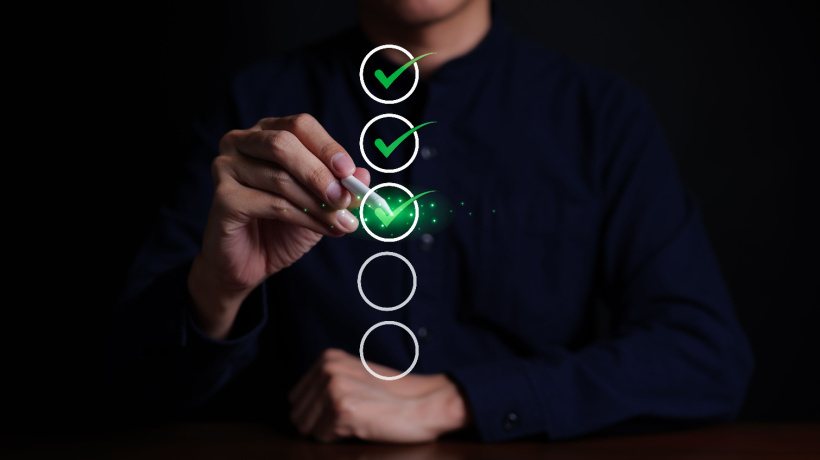A Reflection On Personalized Learning
We all know that unfunny cartoon—an examiner asking various animals—including a penguin, a fish, and an elephant—to climb a tree in a "fair" exam. The cartoon has perhaps elicited a wry chuckle among many an exam taker and those who remember the horrors of their exam days. It’s an age-old problem: attempting to build a "fair" scale of assessment for learners of varied abilities and attitudes; personal learning styles and learning preferences begone!
Take a step back and think of the corporate situation where a software engineer, a QA engineer, a UX designer, and a project coordinator are all expected to finish some learning hours to further their professional development. Of course, each will choose a different type of course to finish their learning hours. Each will also have different learning styles—the designer may be a visual learner, the engineers may be the type to "hit the books", whereas the coordinator could be a kinesthetic learner. Would each style of learning be catered to by the eLearning vendor?
Now zoom back again and think of organizations catering to myriad roles and responsibilities, to hundreds of thousands of learners across the globe, with varying expectations and barometers for success—hybrid or in-person? Remote self-paced learning or live webinars? What about tailored feedback and providing personalized learning paths? Have you taken cognitive styles into account? Forget adaptive learning, individualized instruction seems like a massive task in this scenario.
Welcome to the world of Learning & Development (L&D) managers, designers, and leaders! They are on a quest to provide personalized learning experiences that can build superior outcomes for their organizations on a fixed budget. I think we can forgive some of them for feeling like the proverbial fish out of the water! Or, shall we say, a fish asked to help build a "fair scale" by climbing a tree?
A Reflection On The Chronicles Of Personalized Learning
The Past
Learning, as we know it today, is a vestige from the factory era of the early 20th century—when the main mode of work moved from farms and workhouses towards factories and offices. Learning moved out of the small teacher-led classrooms and, in the East, out of gurukuls. Apprenticeships and clerkships—which was how many learned their skill or trade till then—transmogrified. Suddenly everyone thought of herding people into factory-like classrooms and plopping a blackboard as an instruction aid in front of them. As the decades passed, apprenticeships and internships became add-ons to a distinctly non-personalized way of learning, even among adults.
The Present
So here we are, in the third decade of the 21st century, talking excitedly about "personalized learning" as if it were a new advancement! Well, significant parts are definitely new, especially eLearning, which has been ruling the roost for the last couple of decades, especially during and post the pandemic.
Today, aided by technology, Learning Management Systems (LMS) are transforming into customized Learning Experience Platforms (LXP) that offer personalized learning paths for learners. Some truly new-age platforms integrate Learning Recommendation Engines (LRE) that learn from every interaction the learner has with the platform—as well as their input demographics about the current state of learning, aptitudes, skills, and attitudes—to ‘grow’ with the learner; the content, style of delivery, pacing and assessment styles all adapt to provide the best possible learning environment to the learner. We’re now able to integrate old-new paradigms like gamification and storytelling into our learning—after all, learning platforms must vie with social media platforms, MMPOGs, OTTs, and many other distractions.
A Reflection On Current-Day Personalized Learning Trends
A learner who must fulfill their learning credentials will do so—however, does the learning stick? Can they apply it back to their work and help their employer meet or exceed their business goals? That is where "sticky" and engaging learning helps—wouldn’t you rather engage with a situation-driven MMORPG that helps you prepare for the Project Management Professional (PMP) certification, rather than blindly sift through 143 videos of a PMP preparation course?
Such platforms also have the power of personalized learner analytics in their toolkit—that is, an objective gauge for how each learner is doing with the differentiated instruction. While learner autonomy is key, assessors and employers still need an objective understanding of whether the learner is progressing or not—and that is what these personalized learning algorithms provide.
The Benefits Of Learner-Centered Experiences
The proof, of course, is always in the pudding. Here are some samplings from research that support this learner-centered approach:
- Greater engagement
Adult professionals who have control over their learning experience are more engaged in the process. A study by Fox and colleagues (2015) found that adult learners who were able to personalize their learning experiences were more engaged in the process and had a greater sense of ownership over their learning. - Improved learning outcomes
Adult professionals who are able to take an active role in their learning experience are more likely to achieve their learning goals. Research by Sitzmann et al. (2010) found that learner-centered training programs led to greater improvements in job performance compared to traditional training methods. - Increased satisfaction
Adult professionals who are able to direct their learning experience are more satisfied with their learning experience. A study by Salas and colleagues (2012) found that learner-centered training programs were associated with higher levels of satisfaction among adult learners. - Enhanced transfer of learning
Adult professionals who have control over their learning experience are more likely to apply what they have learned in real-world settings. A study by Van Merrienboer and colleagues (2009) found that learner-centered training programs led to greater transfer of learning to on-the-job tasks.
Greater engagement, improved outcomes, satisfaction, and enhanced transfer of learning! Music to L&D teams’ ears? True personalization in eLearning is here, finally.










